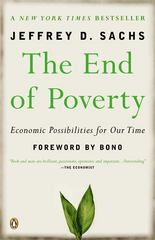7:14 Search Done Hw 2 b. According the theory of PPP, what will happen to the exchange value of the U.S. dollar as a result, all else equal? In particular, would you expect the dollar to appreciate or depreciate against foreign currencies? c. According to PPP, what will happen to the real cost paid by foreigners for U.S. products? 14. According to the Keynesian Cross model of income, how would each of the following shocks affect a nation's real aggregate income (Y) in the short run, all else equal? For each shock, be sure to clearly state a predicted direction of change for income, illustrate your prediction with a Keynesian Cross Diagram, and explain your predictions intuitively in words. a. Government purchases decline b. Congress cuts household income taxes c. Autonomous consumption increases d. Total factor productivity increases 15. According to the Keynesian model of income determination, what determines a nation's real aggregate income? According to the classical model of income determination, what determines a nation's real aggregate income? Why do the models give different answers to the question, and can they both be right? 16. Consider a closed economy with demand for goods as follows: Ya = C+1+G C = 200 + 0.80(Y - T) 1 = 600 G = 1000 T = 1000 a. What is "autonomous expenditure" for this economy? b. Graph this economy's (planned) aggregate expenditure function. Be sure to give the coordinates of at least 2 distinct points in your grap c. According to the Keynesian Cross model of income determination, what would be the short run equilibrium value of real aggregate income (Y) for this economy? d. If government purchases (G) were to increase to 1,200, what would the new short run equilibrium value of income be? 17. Consider a closed economy with the following expenditure function: Yd = C+I+G C = 400 + 0.75(Y - T) 1 = 1200 G = 800 T = 1000 a. What is autonomous expenditure (Eo) for this economy? b. According to the Keynesian Cross model of income determination, what would be the short run equilibrium value of real aggregate income (Y ) for this economy? c. All else equal, what would be the short run equilibrium value of income if government purchases (G) increased by 100 (i.e. - from 800 to 900)? d. What is the government purchases multiplier (i.e. AY* /AG ) for this economy? e. All else equal, what would be the short run equilibrium value of income if government purchases remained at 800, but taxes (T ) are cut by 100 (i.e - from 1000 to 900)? f. What is the tax multiplier (i.e. AY* /AT ) for this economy? According to the Keynesian Cross model, which is more effective at raising aggregate income in the short run, tax cuts or government spending? Why







